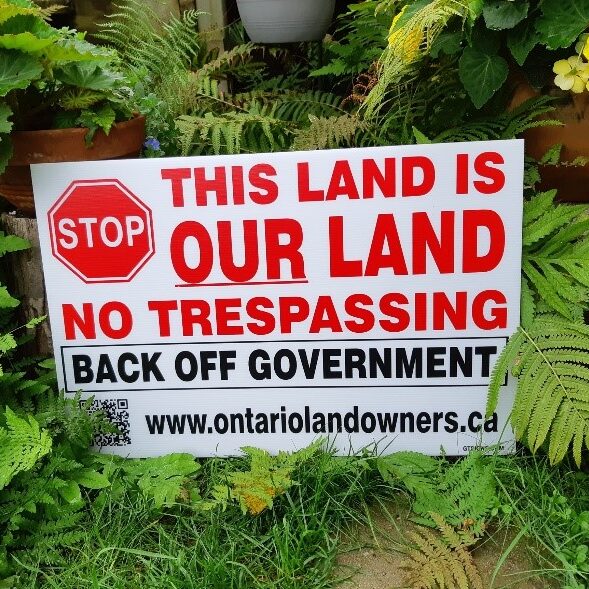Hazard Mapping in Ottawa by Shirley Dolan
- 2019-08-01
- By admin
- Posted in Latest News

Shirley Dolan
On April 5, 2019, the Ontario government posted a proposal on their Environmental Registry website called “Focusing conservation authority development permits on the protection of people and property”. https://ero.ontario.ca/notice/013-4992 The title was encouraging, and some might have been persuaded that Conservation Authorities would be returned to their original mandate of preventing flooding and erosion. Unfortunately, if anything, municipalities and conservation authorities have entered a period of further restricting development by introducing additional flood plain mapping around creeks and waterways.
According to their website, in 2012, the City of Ottawa partnered with the three Conservation Authorities having jurisdiction in the city, Mississippi Valley, Rideau Valley and South Nation Conservation Authorities, to update the flood plain mapping in the Zoning By-law. https://ottawa.ca/en/city-hall/public-engagement/projects/flood-plain-mapping They are now in the third phase of mapping.
The usual process is being followed, at least in the case of Harwood Creek, one of the waterways being studied. People affected by the mapping were invited to a public consultation meeting in the spring of 2019 to view the draft mapping. Only a few attended.
Despite the low turnout at the public meeting, the residents along Harwood Creek got together and challenged the Mississippi Valley Conservation Authority’s assessment of the creek at the CA board meeting in May 2019. I attended this meeting as did OLA President Jeff Bogaerts to support the residents. I was pleasantly surprised to hear our Councillor Eli El-Chantiry, a board member, ask if the culverts along the creek could be looked at. Increasing the flow through the two culverts in the creek would be a way to prevent/mitigate a 100-year flood and avoid a 100-year flood plain designation. This would also avoid a designation which would surely reduce the property value of the homes in the area and allow residents to build a shed, renovate a garage or add a deck, all development activities which would be prevented if the mapping was approved. A report on this possibility was scheduled for the July board meeting. This all sounded very encouraging.
Prior to the July meeting though, it seems that the board members were cautioned that their responsibility was not to their constituents but to act in the best interests of the conservation authority. (Most board members are elected municipal councillors.) Indeed, it appears that a lawyer was present at the meeting to explain this to the board members and the public. This clarification of the duties of CA board members comes straight out of the Ford government’s Modernizing conservation authority operations – Conservation Authorities Act, which proposed to “clarify that the duty of conservation authority board members is to act in the best interest of the conservation authority, similar to not-for profit organizations”.
Connecting the dots, it appears that this proposal was based on the findings from the September 2018 Auditor General of Ontario’s Special Audit of the Niagara Peninsula Conservation Authority:
Municipal priorities sometimes conflict with conservation authorities’ interests. Conservation authorities are governed by boards of directors whose members are appointed by the municipalities that provide funding to conservation authorities. The Act authorizes board members to “vote and generally act on behalf of their respective municipalities.” This puts board members in a difficult position when municipal interests conflict with the interests and responsibilities of conservation authorities and their employees. The conflict is especially problematic when board members are also elected officials (mayors and councillors), whose municipal priorities include facilitating economic development in their municipalities. In certain cases, allowing such development may not be in line with the provincial legislation and policies that conservation authorities are mandated to implement.
Again, loosely connecting the dots, I would guess that this is a commentary on the NPCA’s attempt to allow development on land known as the Thundering Waters. It was to be a candidate for bio-diversity offset, i.e., develop one sensitive area and make up the loss by designating another.
Is the Harwood Creek designation an unintended consequence of the proposal to ignore constituents’ comments? Perhaps. The residents presented many good reasons for the designation to be avoided, including pointing out that the MVCA’s engineer’s numbers used in the modelling were incorrect. However, at the July 17 board meeting, it appears that even though the numbers were wrong, the majority of the board felt that the designation should go ahead because it was the right thing to do.
The next step will be to rezone the affected properties.
It is interesting to note that the authority for such designations is the Provincial Policy Statement and that municipalities have received a letter from the Ministry of Municipal Affairs stating that:
(Minister Clark’s) intention is to bring forward legislation and concrete policies that would impact planning province-wide in the coming months. I encourage you (the municipality) to consider the context of this streamlining work and its focus on the Planning Act and the Provincial Policy Statement, as it may help to inform your local actions. You may wish to consider an interim pause on some planning decisions or reviews of major planning documents such as official plans or comprehensive zoning bylaw updates until this work is completed.
Is the City of Ottawa in a race to complete as many flood plain designations as possible before a new set of rules come into effect that may not support the new zoning? Once designated, its awfully hard to get the zoning removed.
Search:
Categories
Archives
- April 2024
- January 2024
- December 2023
- November 2023
- August 2023
- July 2023
- June 2023
- May 2023
- April 2023
- March 2023
- February 2023
- January 2023
- December 2022
- November 2022
- October 2022
- September 2022
- August 2022
- July 2022
- June 2022
- May 2022
- April 2022
- March 2022
- February 2022
- January 2022
- December 2021
- November 2021
- October 2021
- September 2021
- August 2021
- July 2021
- June 2021
- May 2021
- April 2021
- March 2021
- February 2021
- January 2021
- December 2020
- November 2020
- October 2020
- September 2020
- August 2020
- July 2020
- June 2020
- May 2020
- April 2020
- March 2020
- February 2020
- January 2020
- December 2019
- November 2019
- October 2019
- September 2019
- August 2019
- July 2019
- June 2019
- May 2019
- April 2019
- March 2019
- February 2019
- January 2019
- December 2018
- November 2018
- October 2018
- September 2018
- August 2018
- July 2018
- June 2018
- May 2018
- April 2018
- March 2018
- February 2018
- January 2018
- December 2017
- November 2017
- October 2017
- September 2017
- August 2017
- July 2017
- June 2017
- May 2017
- April 2017
- March 2017
- February 2017
- January 2017
- December 2016
- November 2016
- October 2016
- September 2016
- August 2016
- July 2016
- June 2016
- May 2016
- April 2016
- March 2016
- February 2016
- January 2016
- December 2015
- November 2015
- October 2015
- September 2015
- August 2015
- July 2015
- June 2015
- May 2015
- April 2015
- March 2015
- February 2015
- January 2015
- December 2014
- November 2014
- October 2014
- September 2014
- August 2014
- July 2014
- June 2014
- May 2014
- April 2014
- March 2014
- February 2014
- January 2014
- December 2013
- November 2013
- October 2013
- September 2013
- August 2013
- June 2013
- April 2013
- October 2012
- May 2012
- September 2011



